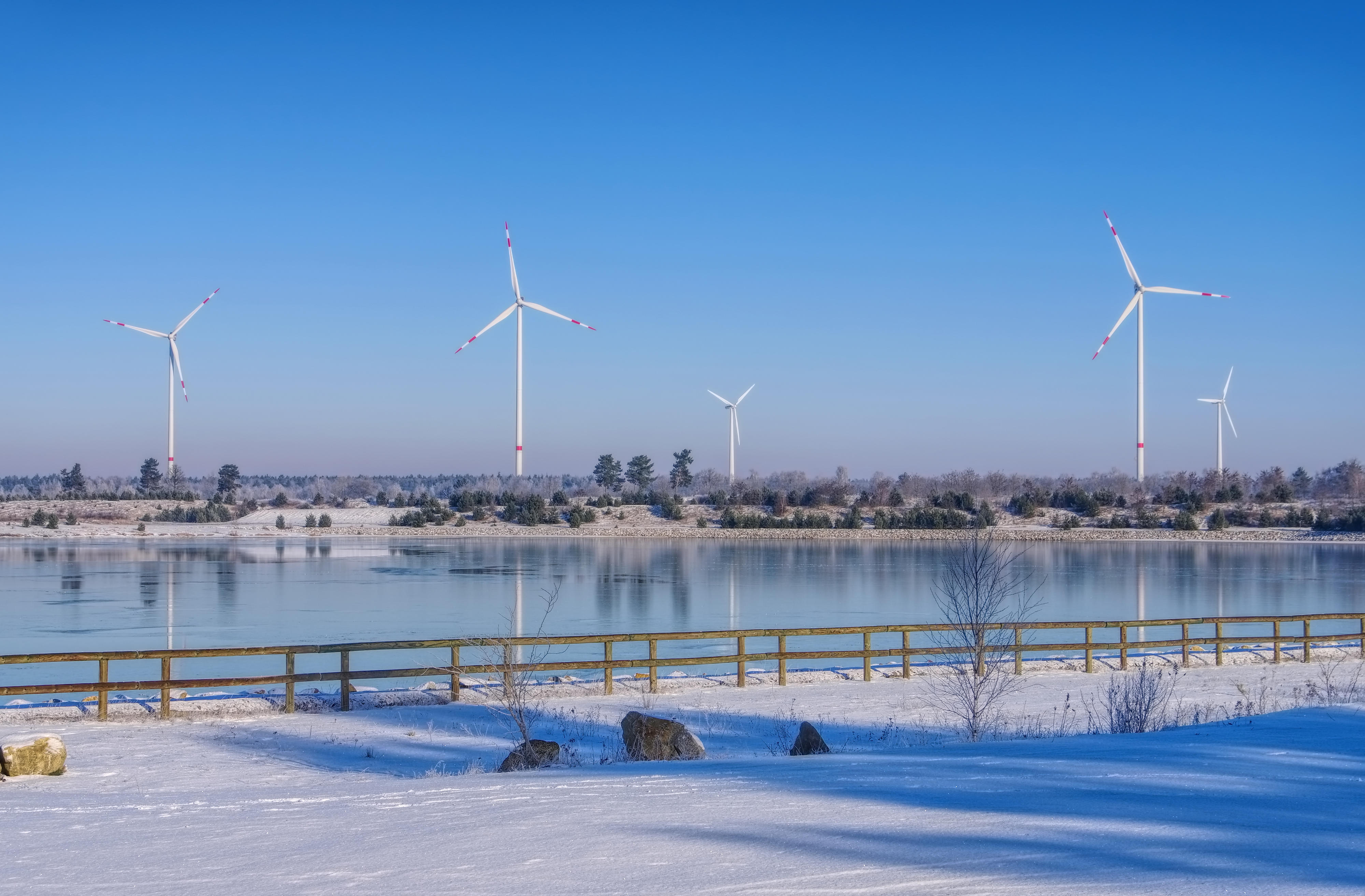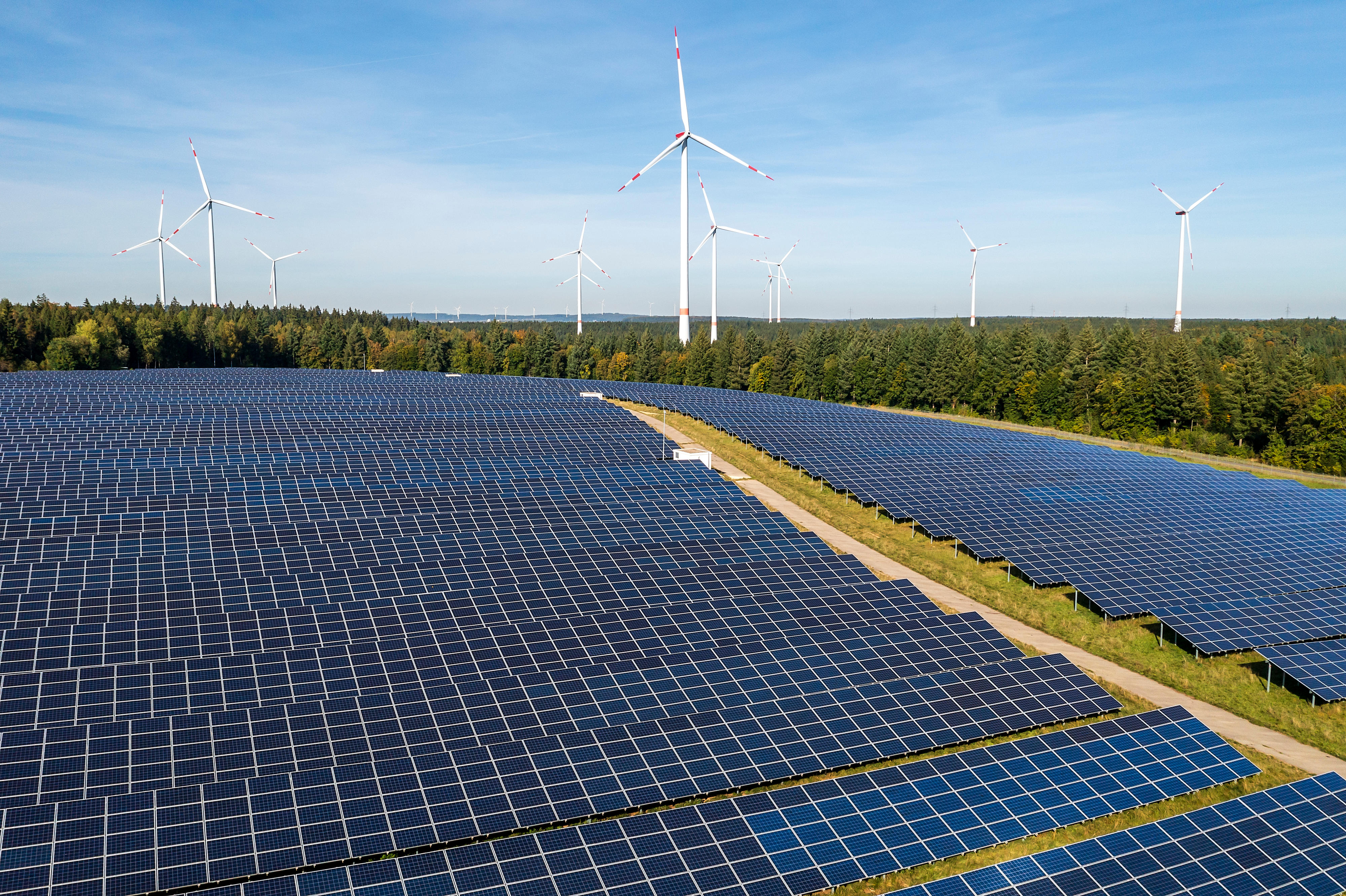Hint: This website is not optimized for your browser version.
Electricity generation in February and March 2018
18 April 2018 – Total electricity generation in Germany in February and March was nearly 3% higher compared to a year earlier. Renewable generation was down by 3%, whereas conventional generation was up 6% year-on-year.
Germany's total electricity generation from conventional and renewable energy sources in February and March 2018 amounted to 93 TWh, a year-on-year increase of 3%. Renewables produced 32 TWh (down 3%) and generation from conventional sources was 61.1 TWh (up 6%). Renewable energy sources accounted for 34% and conventional fuels for 66% of total generation.
Renewables contributed 37% of electricity consumed; the higher proportion of renewables in the consumption figure occurs when Germany produces more electricity than it uses. This additional electricity is sold to neighbouring countries on the electricity market. Summaries of electricity trading in Germany can be found on the SMARD website.
The highest hourly output from all energy sources was 86 GWh and was produced between 1pm and 2pm on Monday, 26 February. The lowest output was 40 GWh between 2am and 3am on Monday, 12 March. The highest output was up 2.3% year-on-year, while the lowest was down 3.7%.
The graph illustrates electricity generation and consumption in February and March 2018. It shows total electricity generation and consumption on each day in the period. The day with the largest amount of electricity generated was 28 February 2018 (1,872 GWh).
The highest and lowest renewable output
The majority of the renewable electricity supply in Germany comes from wind and solar generation. The highest production of renewable energy in a day was on Saturday, 17 March, when wind power contributed by far the greatest proportion of electricity from renewable sources (80%). On that day, the wind was blowing almost constantly in coastal regions and at sea, enabling wind turbines to produce 791 GWh. By contrast, only 5% of renewable electricity produced came from solar power. The northern half of Germany saw some sun that day, but the southern part was largely cloudy and as well as rain there was also some snow, which covered up the solar installations even if the sun did come out for short periods.
Renewable energy reached its highest hourly output at 53.7 GWh between 12pm and 1pm on Thursday, 1 March. This is 1.2% more than the highest hourly output of 53.0 GWh in the same period a year earlier and about 2.4 times the average hourly output in the period from February to March 2018 (22.6 GWh). Renewables generated their lowest hourly output of 6.8 GWh between 5am and 6am on 27 March 2018, compared to the lowest output of 7.7 GWh in the same period a year earlier.
Although the total generation from renewable sources was only 3% lower than in the same period of the previous year, there were bigger changes to the composition of the electricity mix. In February solar generation was 23% higher year-on-year (1,830 GWh compared to 1,785 GWh), but wind generation was 20% lower (7,950 GWh from 9,880 GWh in the same period last year). In March, weather conditions changed. This led to wind generation rising 15% (10,662 GWh compared to 9,302 GWh) and solar generation falling 16% (2,702 GWh compared to 3,231 GWh) from the previous year.
The graph shows generation and consumption on 17 March 2018, when renewables produced their highest output. The detailed figures can be seen by hovering the mouse over the graph. The orange line illustrates electricity consumption.
Highest and lowest conventional input
Conventional power plants have, as far as technically feasible and economically reasonable, adapted flexibly to the generation from renewables and the changes in electricity consumption. Conventional generation recorded its lowest hourly output of 19 GWh on 18 March, while at the same time renewable generation was more than twice as high (41 GWh). Conventional plants produced their highest hourly output of 62 GWh between 6pm and 7pm on Monday, 19 February, when renewables generated just 7 GWh.

